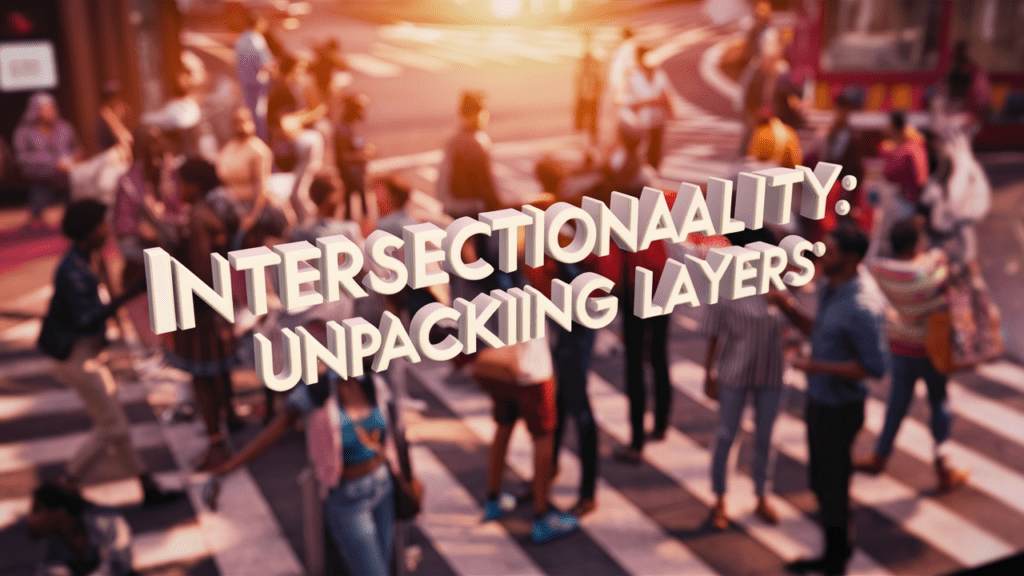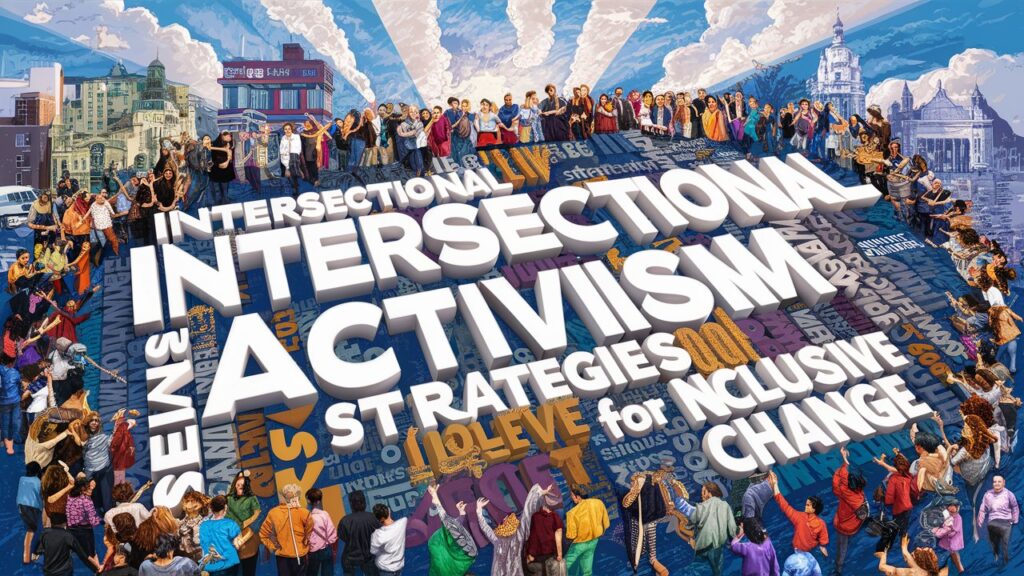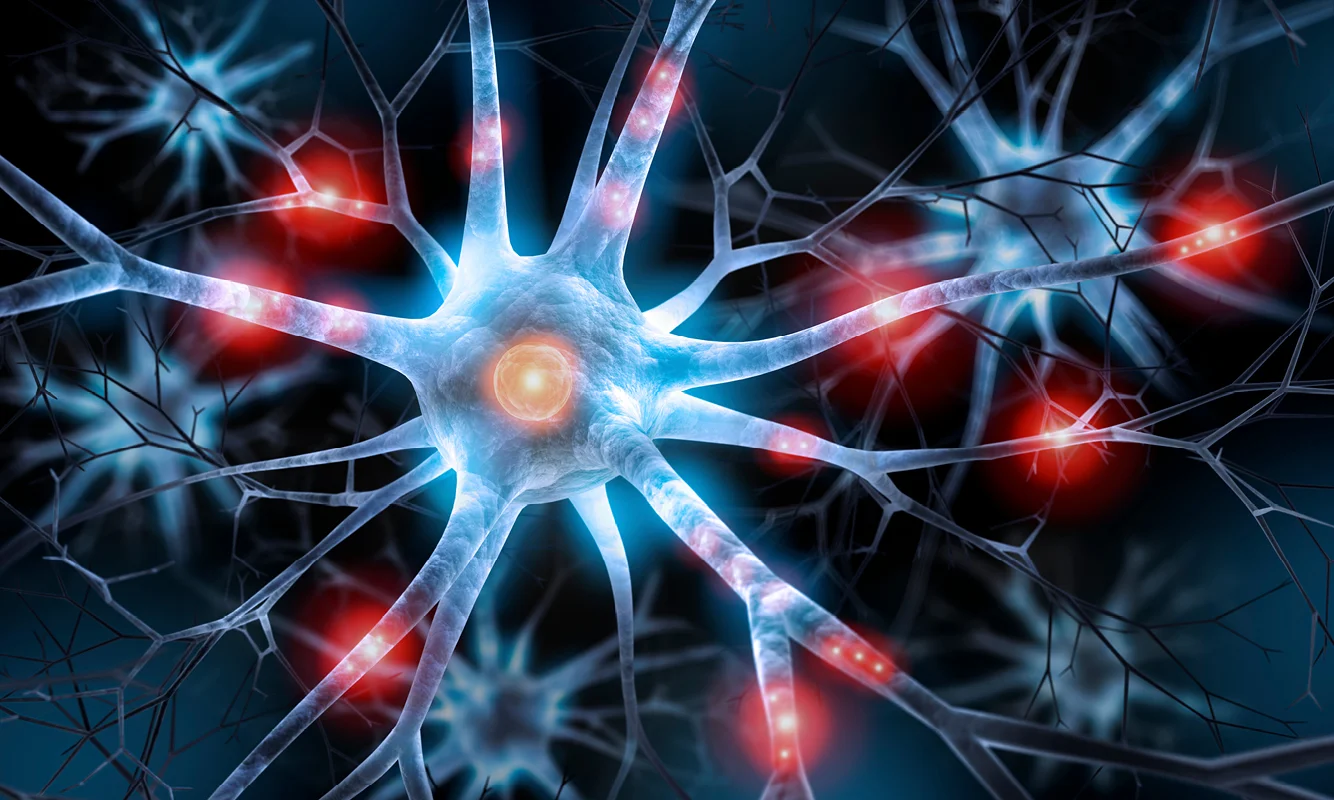Table of Contents
ToggleIntersectional Feminism : Embracing Diversity for Inclusive Progress
Introduction: Embracing Intersectionality in the Feminist Movement
Understanding Intersectionality: Navigating Gender Equality Together
Intersectionality is a big word that means looking at how different parts of who we are—like our race, gender, and social class—can all affect our lives at the same time. It’s like looking at a puzzle where all the pieces fit together to make up who we are and how we’re treated in society.

The Feminist Movement: Then and Now
The feminist movement has changed a lot over time. It started with women fighting for the right to vote, but now it’s about much more than that. It’s about understanding that women’s experiences are different depending on other parts of who they are, like their race or sexuality. This understanding helps make the feminist movement stronger and more inclusive because it means everyone’s voice is heard.
This article will discuss how intersectionality, diversity, and inclusion are important parts of the feminist movement. We’ll see how these ideas help us understand gender equality better and make sure everyone is included in the fight for equal rights.
Intersectionality: Unpacking Layers

Interconnected Identities
Intersectionality emphasizes the complexity of human experiences by recognizing that individuals hold multiple social identities simultaneously. These identities intersect and interact to shape an individual’s lived reality. For example, a woman’s experience of sexism may be compounded by her race, sexual orientation, disability status, or socio-economic background. Acknowledging these intersections is essential for understanding the diverse challenges different groups face within the feminist movement.
Overlapping Systems of Oppression
Intersectionality highlights how various systems of oppression—such as racism, sexism, homophobia, transphobia, ableism, and classism—are interconnected and mutually reinforcing. For instance, a woman of color may face discrimination not only based on her gender but also due to racial biases. Similarly, LGBTQ+ individuals may encounter prejudice that stems from both their gender identity and sexual orientation. Recognizing these overlapping systems of oppression is crucial for creating inclusive feminist spaces that address the needs of all individuals, regardless of their intersecting identities.
We explore the concept of intersectionality within the feminist movement, examining how it informs our understanding of diversity and inclusion. We also discuss the importance of recognizing and dismantling overlapping systems of oppression to create a more equitable society for all.
Diversity in Feminism: Embracing Multi-Faceted Experiences

Embracing Diversity in Feminism: Celebrating Our Differences
Diversity is like having a big, colorful quilt where each patch represents a different kind of woman. In the feminist movement, we celebrate these differences because they make us stronger. By including voices from all walks of life, we get a fuller picture of what it means to be a woman and the challenges we face.
Amplifying Voices That Need to Be Heard
Inclusive feminism puts the spotlight on those who have been pushed to the sidelines. We make sure that women of all colors, sexual orientations, abilities, and backgrounds are front and center. By listening to their stories and struggles, we can better understand what needs to change and work together to make it happen.
In this part, we’ll dive into why diversity is so important in feminism. We’ll see how it helps us understand the many faces of gender inequality and gives us the power to fight for a world where everyone is treated with respect and fairness.
Inclusion as a Pillar of Progress: Creating Safe and Empowering Spaces

Building Safe Havens: Where Everyone Belongs
Inclusion isn’t just a fancy word – it’s the heart and soul of feminism. Safe spaces are like cozy nests where everyone can speak their mind without fear. They’re places where you’re accepted for who you are, no matter your background or identity. Whether it’s a cozy café meet-up or a lively online chat, safe spaces make sure everyone feels heard and respected.
Breaking Down Power Barriers
True inclusion isn’t just about ticking boxes; it’s about shaking up the status quo. Inclusive feminism takes a sledgehammer to power imbalances that keep people down. It means tearing down walls of prejudice and making sure everyone’s voice is heard. By sharing power and lifting up marginalized voices, we create spaces where everyone can shine bright.
In this part, we’ll explore why inclusion is so crucial in the feminist movement. We’ll see how safe spaces and power-sharing can help us build stronger, fairer communities where everyone has a chance to thrive.
Intersectional Activism: Strategies for Inclusive Change

United in Advocacy: The Power of Allies
Intersectional activism is all about recognizing and fighting against the different types of unfair treatment faced by marginalized groups. And one mighty tool in this fight is allyship. Allies are folks with privilege who step up to support and lift up marginalized voices. They listen, learn, and use their position to challenge unfair systems. By teaming up with marginalized communities, allies help create spaces where everyone feels valued and heard.
Changing the Rules for Everyone
Intersectional activism isn’t just about talking the talk; it’s about walking the walk and changing the rules. That means pushing for new laws and policies that treat everyone fairly, no matter their background. Intersectional activists fight to make sure laws protect all folks, especially those who’ve been pushed aside in the past. By shaking up the system, they pave the way for a world where everyone gets a fair shot.
In this part, we’ll dive into intersectional activism and how it’s making waves in the feminist movement. We’ll see how allyship and policy changes are helping us build a world where everyone’s rights are respected, no matter who they are.
Advancing Intersectional Advocacy: Collaborative Approaches for Change

Strength in Numbers: The Power of Coalition Building
To make real change happen, intersectional advocates know they’re stronger together. That’s where coalition building comes in. It’s all about bringing different groups and organizations with similar goals and values together. By teaming up, feminists can join forces to push for new laws, fight against unfair systems, and make spaces more inclusive. Coalition building also builds bonds between marginalized communities, making them stronger and better able to stand up against injustice.
Putting Communities First
When it comes to intersectional advocacy, listening to and involving communities is key. Community engagement means making sure the folks most affected by unfair treatment have a say in decisions that affect them. By putting their experiences front and center, intersectional advocates can come up with better ways to fight against inequality and promote fairness. Community engagement also builds trust and gives marginalized groups the power to speak up and fight for their rights together.
Sustaining Inclusive Progress: Education and Empowerment
Empowering Through Education
To keep making progress, we need to keep learning and spreading awareness. Education is key to helping people understand and tackle different forms of oppression. By providing resources, workshops, and training, we can give folks the tools they need to stand up for diversity, inclusion, and fairness. When we invest in education, we empower more people to make a difference and create lasting change.
Making Every Voice Heard
Representation matters, too. It’s about making sure everyone’s experiences and backgrounds are reflected in leadership roles, decision-making, and media. When we see people like us in positions of power, it not only shows that our experiences matter but also gives us role models to look up to. By promoting diverse representation, we create spaces where everyone feels valued and empowered to make a difference.
Conclusion
In closing, embracing intersectionality, diversity, and inclusion is vital for moving the feminist movement forward and building a fairer world. When we recognize how different forms of oppression are connected, we can develop better ways to fight inequality and promote justice. Through activism, working together, engaging communities, educating others, and ensuring representation, we can build a future where everyone is treated with respect, no matter who they are. Together, we can create a more inclusive world where everyone has the chance to thrive and make a positive impact on society.


